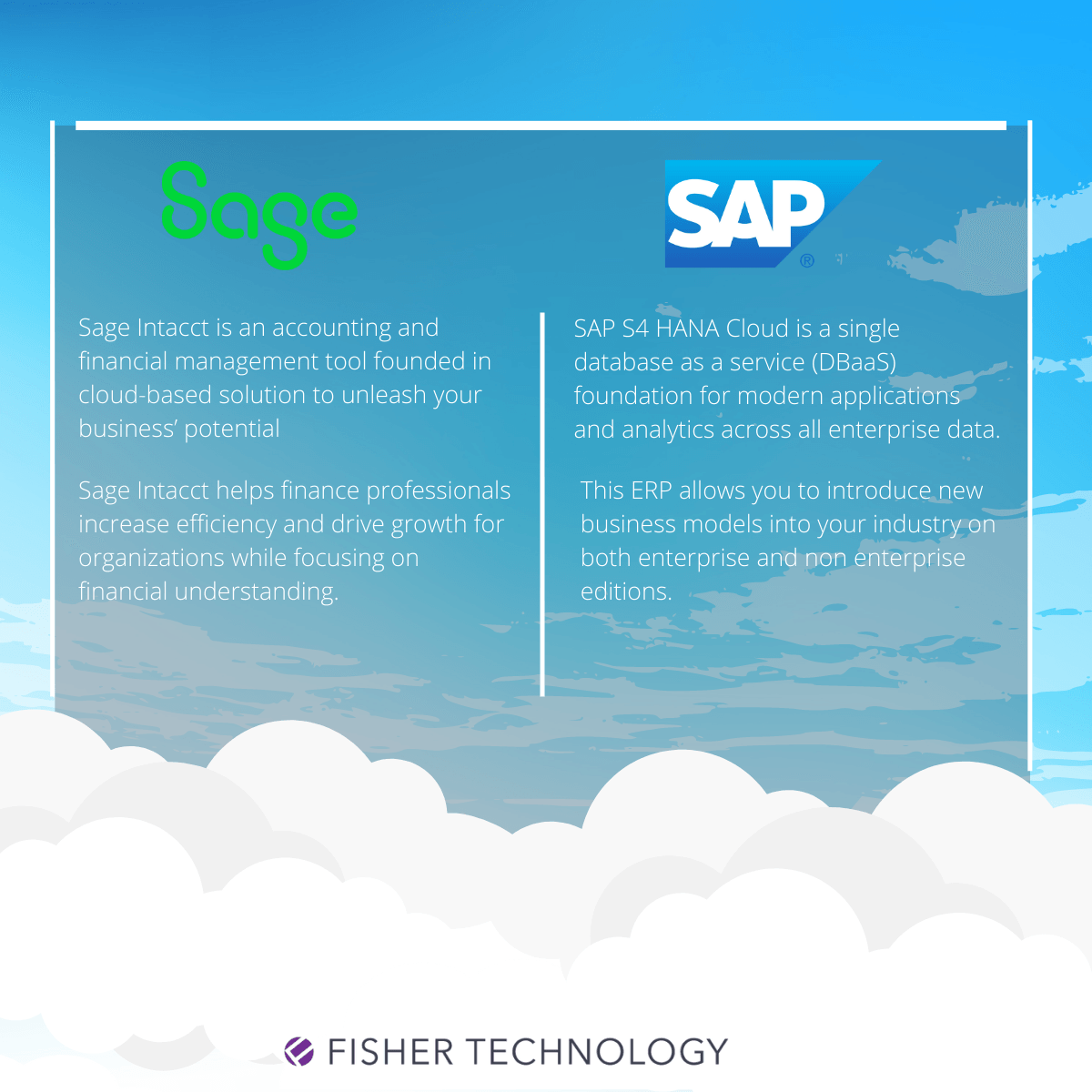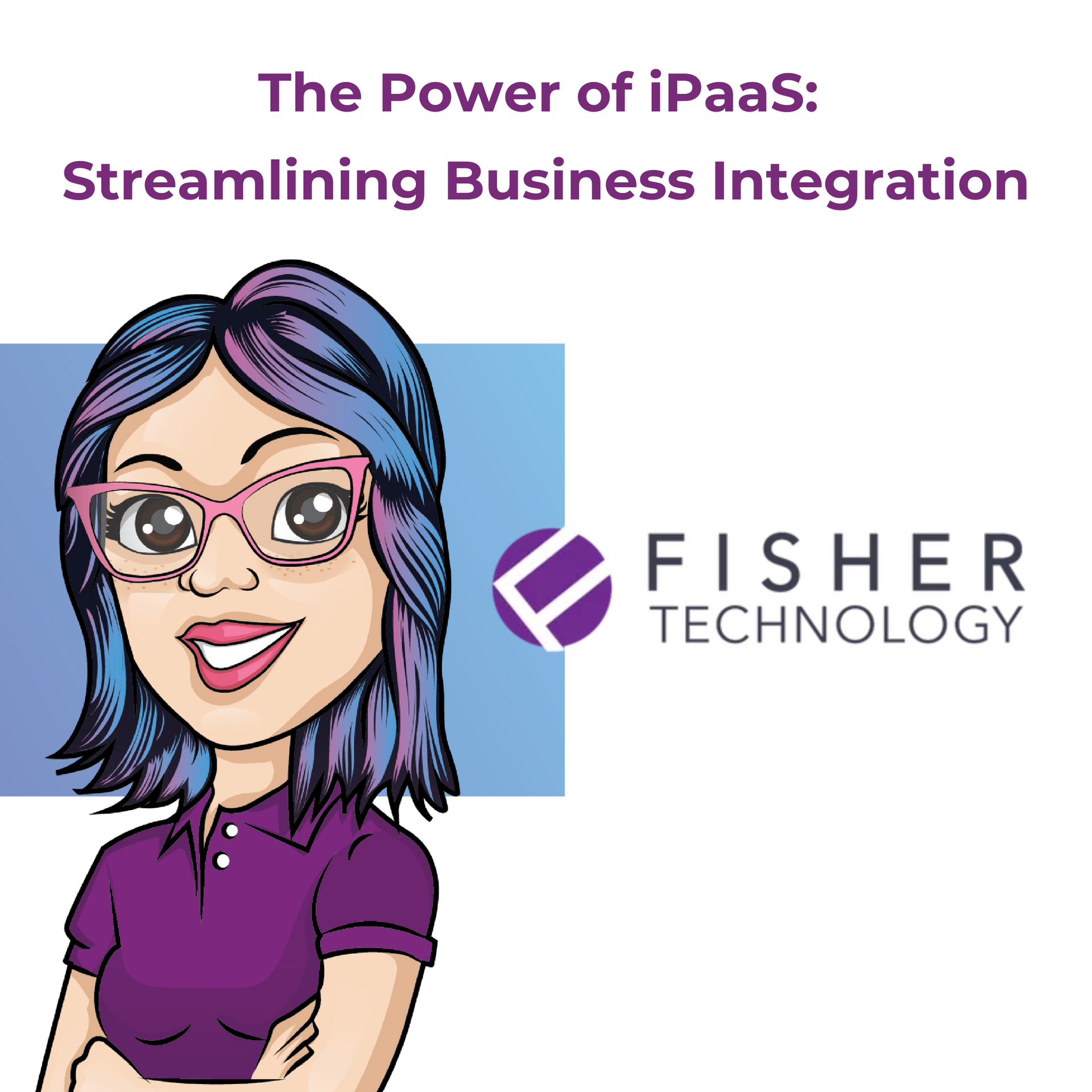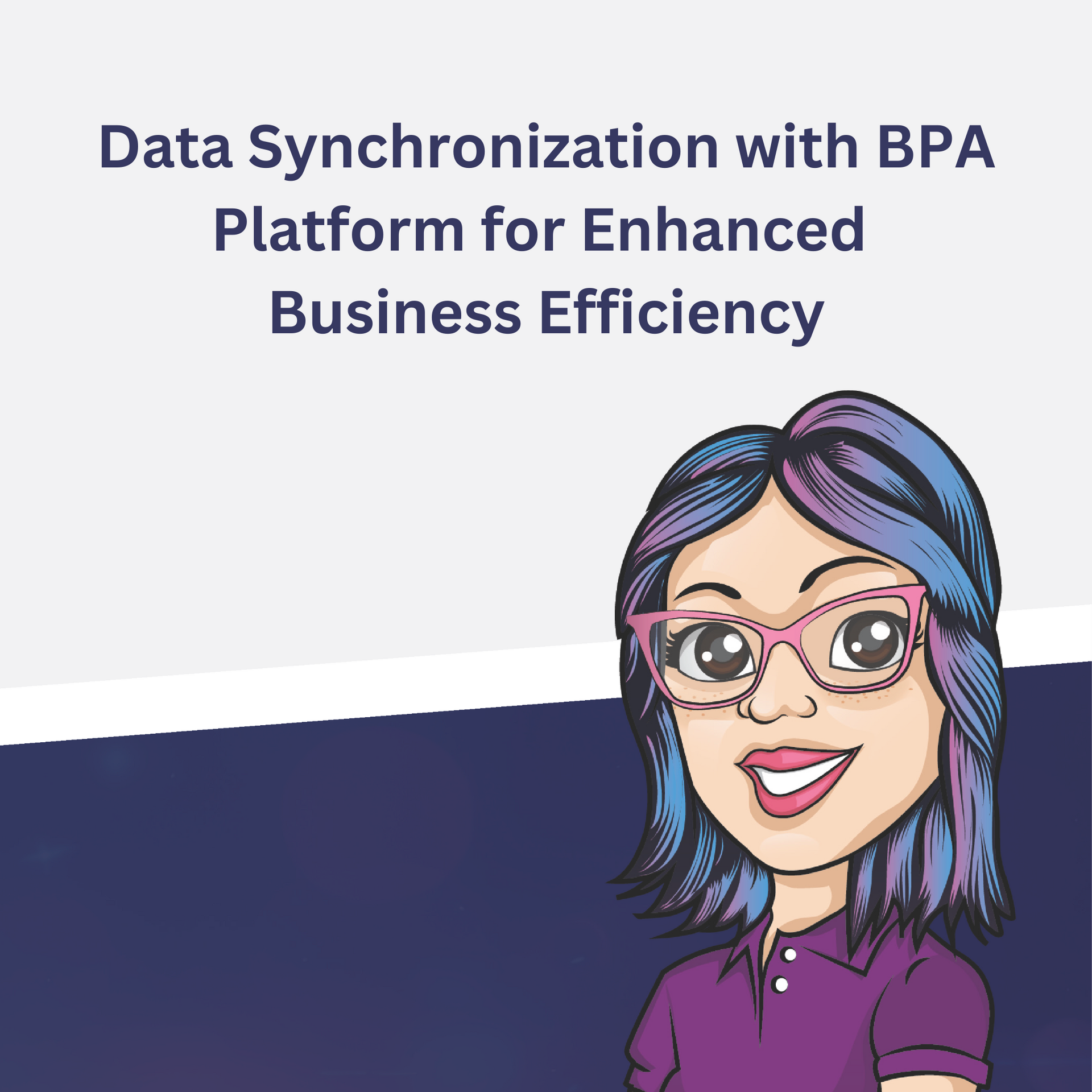Head in the Clouds: Floating toward Cloud-based Solutions
Should I stay or should I go...
Within the ERP eco systems, a push toward cloud-based solutions from on-premise has been in recent time accelerated. Rapid growth and development from legacy and new systems are growing the number of available options for those looking to leverage a cloud infrastructure. But it leaves us to wonder- why now and what could it mean for your business processes going forward?
When you imagine cloud-based solutions, we don’t necessarily mean stratus or cumulus ones but instead a new way to manage solutions in real-time from any location around the globe, even a beach! Cloud based solutions refer to using a network of solutions connected to the internet and grants you the ability to access services from anywhere via the internet. Businesses are starting to step away from the hassle of dealing with on-premise solutions and on-site maintenance. With products like SAP S4 Hana and Sage Intacct, it is becoming increasingly popular to move toward cloud-based solutions for several reasons.
- Cost
- Security
- Accessibility
- Reduced Risk
“You know what's unique about Fisher Technology? Whether or not you decide to stay on-premise or explore the opportunities of a cloud-based solution, our
experts will guide you through all options for your BPA Connections and help you figure out the best next steps”
-
Penny Process

Why the Switch?
As mentioned previously in an earlier blog, it is no secret that businesses are not too fond of dealing with on-premise issues and on-site server maintenance. After switching to the cloud, there are a far less tasks to worry about. While directly handling on-premise solutions may seem like an advantage, that's not always the case. Employees may end up spending more time on maintaining servers, updating software, or creating backups instead. Additionally, there may be certain system requirements needed for on-premise servers and, in all likelihood, need an IT services team to keep systems running at peak efficiency.
Thinking about switching to the cloud? It's important to advancing your business goals when determining which solution best fits your needs. Take time in exploring both the advantages and disadvantages of integrating. Here's a few key points to keep in mind:
| Advantages | Disadvantages |
|---|---|
| No need to use on-premise hardware and reserve server space | Data limitations based on storage and cost availability |
| Access key information at anytime and anywhere | Internet outages cuts access to your information |
| Ability to back-up data in regularly scheduled intervals | Time consuming data recovery |
| Software updates and maintenance handled by the cloud provider | Dependence on cloud provider |
| Cost can be low, spread evenly through a subscription-based model | Discontinued support if a product successor is released |
What do cloud-based solutions mean for you?
It is important to address the elephant in the room…Yes, I’m looking at you, on-premise solutions. With the great migration to on-cloud, there becomes less of a roadmap for products like Sage 100 or 300 as well as SAP Business One, the predecessors to Intacct and S4 HANA.
Security and control play a factor in whether a company decides to switch from an on-premise solution to a cloud-based solution. In an on-premise environment, enterprises retain all their data and are fully in control of what happens to it, for better or worse. Companies in certain industries with extra privacy concerns are more likely to hesitate to leap into the cloud before others because of this reason.
In a cloud-based environment, the validity of ownership of data is one that many companies – and customers, tend to have doubts about. Unexpected errors or system outages can render your software unusable, meaning during that time you may not be able to reach valuable information and data.
Because the software does not often run on allocated hardware, this makes local hardware requirements significantly lower. Additionally, maintenance of the hardware and software is also carried out automatically by the cloud provider. Software updates are installed automatically. Those advantages significantly reduce the workload for the company's IT department (if they have a department at all, and they could choose to outsource IT entirely).
The Fisher Difference
We challenge you to look at what a cloud based solution means for your day-to-day business operations. Can you avoid manual entry and avoid critical business errors by optimizing your workflow?
Regardless of whether you are using an on premise system or and in-cloud solution, the bottom line is that BPA Platform will fit perfectly into either environment. For existing customers, we want you to know that Fisher Technology is here to help you move toward a system that works for your business process. If you currently host an on-premise environment, we encourage you to see what your future may look like if you decide to stay with your existing configuration or explore the possibility of moving to a cloud-based solution. Whether it is ease of use or convenience, those using a cloud-based system should know that there are numerous features accessible to use through BPA Platform, we’re here to connect with you and demonstrate which ones best suits your needs in any environment of your choosing.
That is where BPA Platform comes in. More than just offering a piece of software, Fisher Technology provides unparalleled service, and consulting that not only gets your automation started, but optimizes and enhances your existing processes.
P.S. Are you following us on LinkedIn yet? That is the best way to stay connected with us on a daily basis! Like, comment and share all of our posts!




